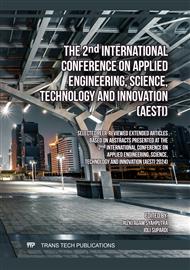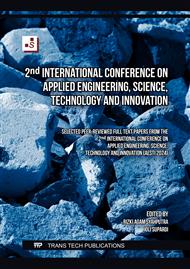p.41
p.51
p.59
p.75
p.89
p.99
p.107
p.119
p.127
HEC-RAS Modeling for Urban Drainage Performance Evaluation in Overcoming Surface Runoff: Case Study
Abstract:
This research is against the backdrop of the frequent occurrence of recurring floods in urban drainage channels in the Meulaboh City area. The locations of the observation areas are Kuta Padang Village, Ujong Baroh Village, and Drien Rampak Village in Johan Pahlawan District, West Aceh Regency because this area has several flood and inundation problems at several observation points. The purpose of this study is to analyze and evaluate the existing condition of drainage channels in the study area and seek solutions to minimize inundation and flooding or zero runoff. The research method used is descriptive quantitative and starts from field surveys, data collection, hydrological analysis with the Rational Method, and hydraulic analysis using HEC-RAS 6.3.1 Software. The results of the analysis show a comparison of the total flood discharge with the channel discharge where 6 (six) drainage points are unable to accommodate the total channel discharge, namely S3, S6, S7, S9, S10, and S14 on a runoff height of <5cm. Ujong Baroh Village obtained 5 (five) drainage channel points that were unable to accommodate the total channel discharge, namely S2, S4, S5, S11, and S12 with a runoff height of <5cm, while in Drien Rampak Village 3 drainage channel points have not been able to accommodate the total channel discharge, namely S6, S7, and S10 with a runoff height of 5-10 cm. Regarding several alternative recommendations that can be doable, namely normalization in the form of cleaning from sedimentation and garbage and the need to increase the channel dimensions and efforts need to be made to study and implement environmentally friendly drainage concepts such as integrating rainwater harvesting with infiltration wells or bio pore holes.
Info:
Periodical:
Pages:
89-97
Citation:
Online since:
June 2025
Authors:
Keywords:
Price:
Сopyright:
© 2025 Trans Tech Publications Ltd. All Rights Reserved
Share:
Citation:



